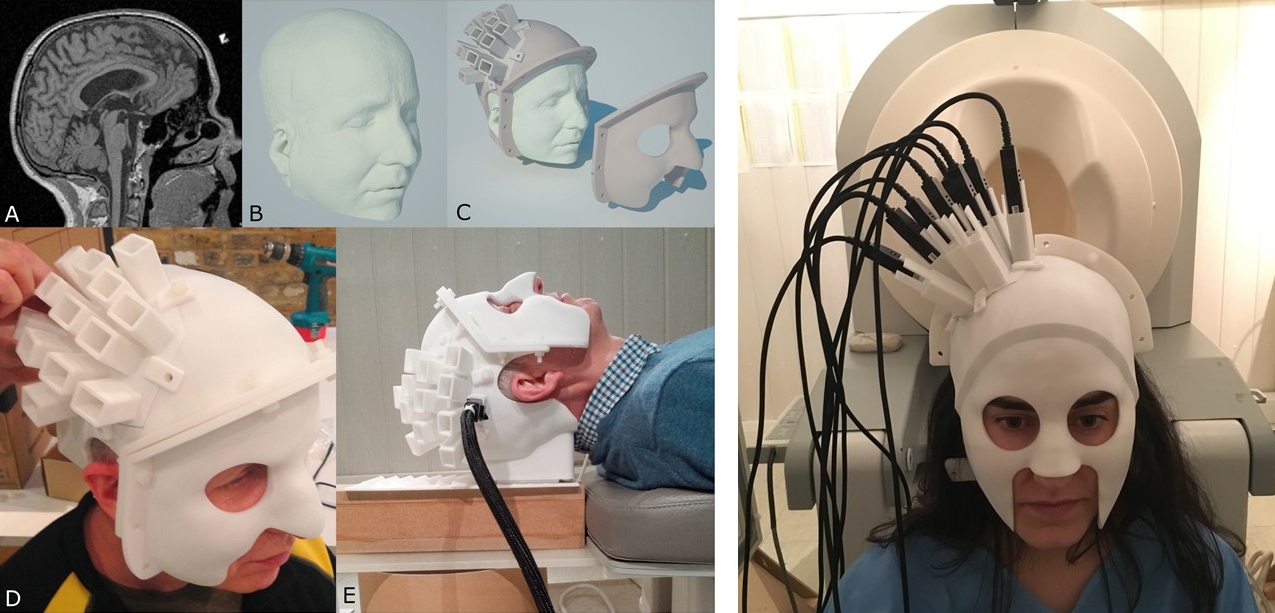
In an important step towards building a full-head MEG system with OPMs, researchers at University of Nottingham and University College of London published results on their studies with a single OPM channel. A custom 3D printed MEG helmet was fabricated with slots to hold OPM at various locations. MEG evoked response was measured from 13 different locations by sequentially moving the OPM to a different slot after each measurement.
In the abstract, the researchers note, “Using median nerve stimulation, we show that the OPM can detect both evoked (phase-locked) and induced (non-phase-locked oscillatory) changes when placed over sensory cortex, with signals ~4 times larger than equivalent SQUID measurements.”. They further comment, “Further, source-space modeling shows that, with 13 sequential OPM measurements, source-space signal-to-noise ratio (SNR) is comparable to that from a 271-channel SQUID system.”.
The next step is to build a partial head system with multiple sensors operating simultaneously (pictured upper right).
Further reading: NeuroImage, Volume 149, 1 April 2017, Pages 404–414.